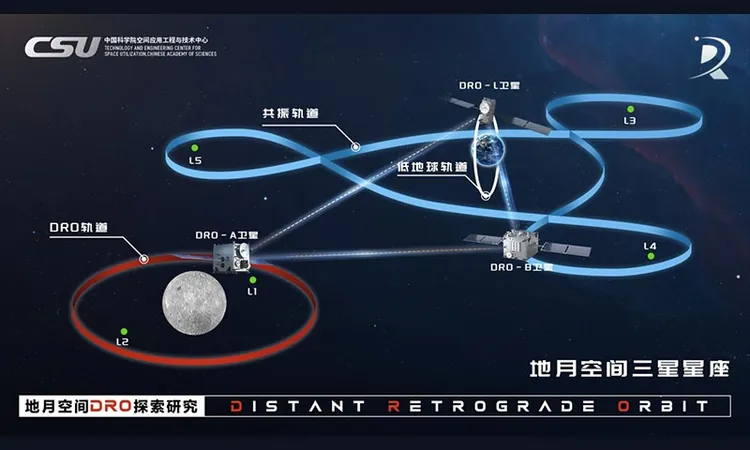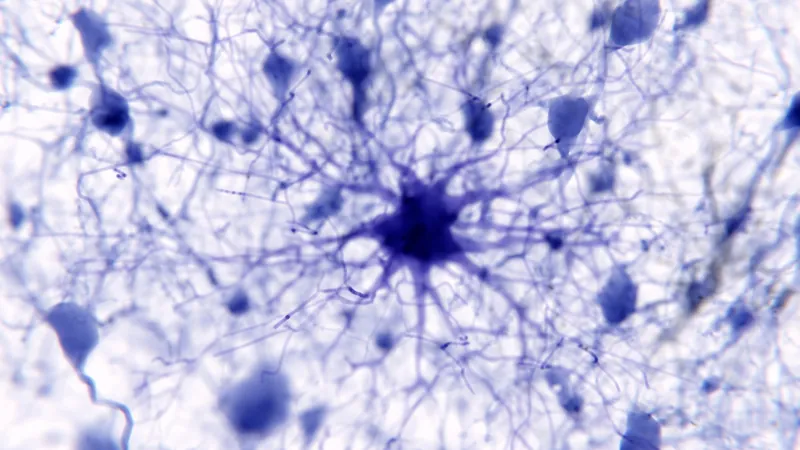
China's 123-Day Space Mission: A Daring Rescue of Malfunctioning Satellites
2025-05-06
Author: Wei Ling
A Groundbreaking Achievement in Space
In a historic leap for space exploration, China has unveiled the world's first three-satellite constellation operating in the distant retrograde orbit (DRO) between Earth and the Moon. This revolutionary achievement has been successfully managing operations for over 200 days, as confirmed at a recent academic seminar conducted by the Technology and Engineering Center for Space Utilization (CSU) at the Chinese Academy of Sciences.
Facing Challenges Head-On
The seminar also shed light on a harrowing episode during the launch of two of the satellites — DRO-A and DRO-B — in March 2024. The mission faced significant setbacks, but thanks to a dedicated team young enough to be the future of aerospace, the situation turned from potential disaster into remarkable success.
What Happened During the Launch?
On March 13, 2024, the DRO-A and DRO-B satellites were launched using the Long March-2C rocket from the Xichang Satellite Launch Center, marking China's bold venture into deep space exploration. However, shortly after launch, an anomaly disrupted the expected trajectory. What should have been a seamless separation turned into chaos when signals indicated that the satellites were stranded at a mere 134,000 kilometers instead of their intended 292,000.
Rapid Response from a Young Team
The team, composed mainly of millennials and Gen Z members, sprang into action. Zhang Hao, a research fellow involved in orbital design, vividly recalls the panic as parameters on the screen fluctuated erratically. With a heartbeat racing, he and his colleagues knew they had to act fast to prevent the loss of these vital satellites.
From Frantic to Fantastic
The ensuing 123 days were nothing short of a rollercoaster. The team executed a series of trajectory adjustments and recovery operations covering over 8.5 million kilometers, all while managing to use merely one-fifth of the usual fuel. Finally, on July 15, 2024, their efforts bore fruit as they successfully separated the satellites and turned an alarming incident into a vivid example of human ingenuity.
Unlocking New Possibilities
This mission not only salvaged the satellites but also validated pioneering techniques such as low-energy transfers and long-distance inter-satellite communication. Zhang believes the constellation will act as a beacon for future deep space missions, laying down the groundwork for lunar resource development and potentially even a highway for Mars exploration.
A Proud Moment for the Youth
The youth-driven team displayed remarkable skill and resilience under pressure. Yin Yongchen, a key member of the project, expressed immense pride in being part of this historic endeavor, highlighting that the younger generation is more inspired than ever to contribute to China's aspirations in space.
Overcoming Technical Obstacles
As the satellites began spinning uncontrollably and faced power shortages due to damaged solar panels, the team worked around the clock, issuing multiple commands to stabilize the satellites. In a pressure-cooker environment, they managed to overcome each challenge, executing complex maneuvers to restore the satellites to their intended altitude.
The Future of Space Exploration Awaits
Reflecting on the mission, the team displayed a sense of accomplished calm amidst the chaos. They've not only achieved a significant technical feat but have also set the stage for subsequent scientific breakthroughs. This milestone in China's space program underscores the critical role of youth in pioneering technologies that will shape the future of our exploration beyond Earth.



 Brasil (PT)
Brasil (PT)
 Canada (EN)
Canada (EN)
 Chile (ES)
Chile (ES)
 Česko (CS)
Česko (CS)
 대한민국 (KO)
대한민국 (KO)
 España (ES)
España (ES)
 France (FR)
France (FR)
 Hong Kong (EN)
Hong Kong (EN)
 Italia (IT)
Italia (IT)
 日本 (JA)
日本 (JA)
 Magyarország (HU)
Magyarország (HU)
 Norge (NO)
Norge (NO)
 Polska (PL)
Polska (PL)
 Schweiz (DE)
Schweiz (DE)
 Singapore (EN)
Singapore (EN)
 Sverige (SV)
Sverige (SV)
 Suomi (FI)
Suomi (FI)
 Türkiye (TR)
Türkiye (TR)
 الإمارات العربية المتحدة (AR)
الإمارات العربية المتحدة (AR)